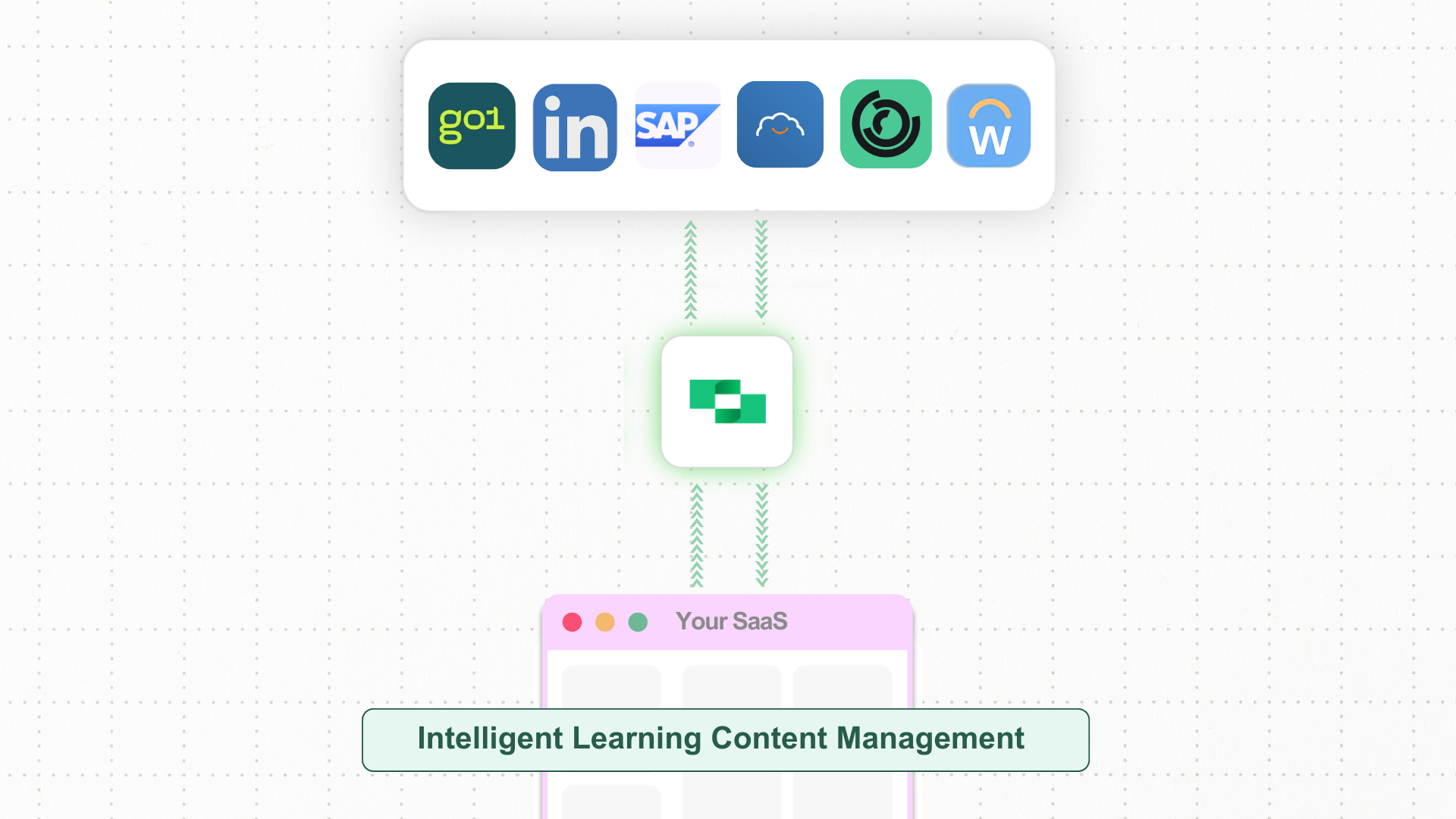
StackOne simplifies all of this by offering:
LXP/LMS Content Aggregation: Key Steps and System Interactions
Implementing content aggregation for your LXP/LMS platform allows you to pull learning content, user data, and progress tracking from multiple LMS providers through a single, unified API. This enables you to create a centralized learning experience without the complexity of multiple integrations.Steps for Content Aggregation and User Sync
Below are the steps to set up comprehensive content aggregation, user provisioning, and progress tracking across multiple LMS platforms.1
Aggregate Learning Content and Courses
Start by fetching all available learning content and courses from connected LMS providers. This gives you access to course titles, descriptions, content types, metadata, and learning objects that can be aggregated into your centralized system.Use the
updated_after parameter to efficiently sync only recently updated content, reducing API calls and improving performance.- API Endpoint: GET /lms/content
- API Endpoint: GET /lms/courses
2
Provision Users from Multiple LMS Platforms
Retrieve user data from all connected LMS platforms to provision users in your aggregated system. This includes user profiles, enrollment data, and unique identifiers that allow you to match users across different platforms.The StackOne API provides multiple identifier fields to ensure accurate user matching across platforms, including external references commonly used in SSO integrations.
- API Endpoint: GET /lms/users
- API Endpoint: GET /lms/users?filter[external_reference]=‘external_reference’
3
Aggregate Completions and Progress Data
Pull completion data and assignment progress from all connected LMS platforms to create a unified view of learner progress. This includes completion status, results, timestamps, and learning object associations.Use StackOne IDs to easily match completions with users and content across different platforms, ensuring consistent progress tracking.
- API Endpoint: GET /lms/completions
- API Endpoint: GET /lms/assignments
- API Endpoint: GET /lms/users//assignments
4
Sync Categories, Skills, and Metadata
Retrieve additional metadata like categories, skills, and other taxonomies from connected LMS platforms. This enriches your aggregated content with proper categorization and skill mapping, enabling better content discovery and recommendation systems.
- API Endpoint: GET /lms/categories
- API Endpoint: GET /lms/skills
5
Implement Real-Time Updates
Set up automated sync processes using the
updated_after filter to regularly fetch only the latest changes from each connected LMS platform. This ensures your aggregated content and user data stay current without overwhelming your system with unnecessary API calls.Store the last sync timestamp for each LMS provider to efficiently track and update only modified content, users, and progress data.Example API Calls
- curl
- python

